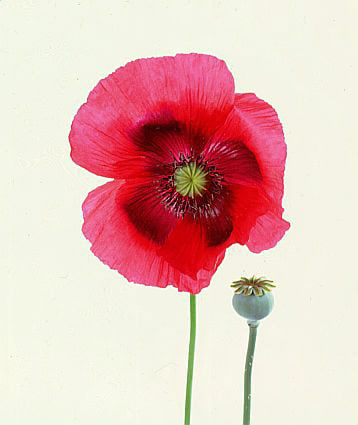Papaver commutatum

Caucasian scarlet poppy
An upright annual to 40cm, with downy, pinnatifid leaves to 15cm in length and long-stalked flowers 7cm in width, each with four bright red petals, with a large black blotch at the base
Size
Ultimate height
0.1–0.5 metresTime to ultimate height
1–2 yearsUltimate spread
0–0.1 metreGrowing conditions
Moisture
Well–drainedpH
Acid, Alkaline, NeutralColour & scent
| Stem | Flower | Foliage | Fruit | |
| Spring | Green | |||
|---|---|---|---|---|
| Summer | Black Red | Green | ||
| Autumn | ||||
| Winter |
Position
- Full sun
Aspect
South–facing or East–facing
Exposure
Exposed or Sheltered Hardiness
H5Botanical details
- Family
- Papaveraceae
- Native to GB / Ireland
- No
- Foliage
- Deciduous
- Habit
- Clump forming
- Genus
Papaver can be annuals, biennials or herbaceous perennials with simple or pinnately divided leaves and short-lived, saucer-shaped, 4-petalled flowers which may be solitary or in racemes
- Name status
Correct
How to grow
Cultivation
Grow in deep, fertile, well-drained soil in full sun
Propagation
Propagate by seed sown in spring
Suggested planting locations and garden types
- Patio and container plants
- Mediterranean climate plants
- Wildflower meadow
- City and courtyard gardens
- Cottage and informal garden
- Flower borders and beds
- Cut flowers
Pruning
Cut back after flowering
Pests
May be susceptible to aphids
Diseases
May be susceptible to downy mildews, powdery mildews, fungal wilts and verticillium wilt
Get involved
The Royal Horticultural Society is the UK’s leading gardening charity. We aim to enrich everyone’s life through plants, and make the UK a greener and more beautiful place.
